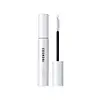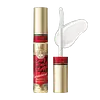What's inside
What's inside
 Key Ingredients
Key Ingredients

 Benefits
Benefits

 Concerns
Concerns

 Ingredients Side-by-side
Ingredients Side-by-side

Water
Skin Conditioning1,2-Hexanediol
Skin ConditioningButylene Glycol
HumectantPentylene Glycol
Skin ConditioningCentella Asiatica Extract
CleansingPortulaca Oleracea Extract
Skin ConditioningHouttuynia Cordata Extract
Skin ConditioningSodium Hyaluronate
HumectantHydroxyethylcellulose
Emulsion StabilisingSodium Carbomer
Emulsion StabilisingPropanediol
SolventEthylhexylglycerin
Skin ConditioningDisodium EDTA
Disodium Phosphate
BufferingPolysorbate 60
EmulsifyingSodium Phosphate
BufferingTocopherol
AntioxidantGlycerin
HumectantHydroxyacetophenone
AntioxidantMyristoyl Pentapeptide-17
Skin ConditioningCopper Tripeptide-1
Skin ConditioningCaprylyl Glycol
EmollientBenzoic Acid
MaskingSodium Benzoate
MaskingWater, 1,2-Hexanediol, Butylene Glycol, Pentylene Glycol, Centella Asiatica Extract, Portulaca Oleracea Extract, Houttuynia Cordata Extract, Sodium Hyaluronate, Hydroxyethylcellulose, Sodium Carbomer, Propanediol, Ethylhexylglycerin, Disodium EDTA, Disodium Phosphate, Polysorbate 60, Sodium Phosphate, Tocopherol, Glycerin, Hydroxyacetophenone, Myristoyl Pentapeptide-17, Copper Tripeptide-1, Caprylyl Glycol, Benzoic Acid, Sodium Benzoate
Water
Skin ConditioningButylene Glycol
HumectantDipropylene Glycol
HumectantPEG-400
Emulsion StabilisingSorbitol
HumectantAlcohol Denat.
AntimicrobialGlycerin
HumectantSodium Acrylate/Acryloyldimethyltaurate/Dimethylacrylamide Crosspolymer
Emulsion StabilisingArginine
MaskingXanthan Gum
EmulsifyingZiziphus Jujuba Seed Extract
Skin ConditioningCamellia Seed Oil
Sodium Chloride
MaskingRosa Canina Fruit Extract
AstringentAverrhoa Carambola Leaf Extract
HumectantAorta Extract
Skin ConditioningRubus Idaeus Extract
Skin ProtectingSodium Acetylated Hyaluronate
HumectantMacadamia Ternifolia Seed Oil
EmollientSericin
Skin ConditioningCamellia Euryoides Leaf Extract
EmollientArtemisia Vulgaris Extract
Skin ConditioningHoney Extract
HumectantAspergillus/Camellia Japonica Seed Ferment Extract Filtrate
Skin ConditioningSoluble Collagen
HumectantHydroxypropyl Methylcellulose
Emulsion StabilisingEthylhexylglycerin
Skin ConditioningSodium Citrate
BufferingSimethicone
EmollientCitric Acid
BufferingEDTA
Laurtrimonium Chloride
EmulsifyingHypericum Erectum Flower/Leaf/Stem Extract
Skin ConditioningTocopherol
AntioxidantHydrolyzed Corn Starch
HumectantPotassium Sorbate
PreservativePhenoxyethanol
PreservativeMethylparaben
PreservativeWater, Butylene Glycol, Dipropylene Glycol, PEG-400, Sorbitol, Alcohol Denat., Glycerin, Sodium Acrylate/Acryloyldimethyltaurate/Dimethylacrylamide Crosspolymer, Arginine, Xanthan Gum, Ziziphus Jujuba Seed Extract, Camellia Seed Oil, Sodium Chloride, Rosa Canina Fruit Extract, Averrhoa Carambola Leaf Extract, Aorta Extract, Rubus Idaeus Extract, Sodium Acetylated Hyaluronate, Macadamia Ternifolia Seed Oil, Sericin, Camellia Euryoides Leaf Extract, Artemisia Vulgaris Extract, Honey Extract, Aspergillus/Camellia Japonica Seed Ferment Extract Filtrate, Soluble Collagen, Hydroxypropyl Methylcellulose, Ethylhexylglycerin, Sodium Citrate, Simethicone, Citric Acid, EDTA, Laurtrimonium Chloride, Hypericum Erectum Flower/Leaf/Stem Extract, Tocopherol, Hydrolyzed Corn Starch, Potassium Sorbate, Phenoxyethanol, Methylparaben
 Reviews
Reviews

Ingredients Explained
These ingredients are found in both products.
Ingredients higher up in an ingredient list are typically present in a larger amount.
Butylene Glycol (or BG) is used within cosmetic products for a few different reasons:
Overall, Butylene Glycol is a safe and well-rounded ingredient that works well with other ingredients.
Though this ingredient works well with most skin types, some people with sensitive skin may experience a reaction such as allergic rashes, closed comedones, or itchiness.
Learn more about Butylene GlycolEthylhexylglycerin (we can't pronounce this either) is commonly used as a preservative and skin softener. It is derived from glyceryl.
You might see Ethylhexylglycerin often paired with other preservatives such as phenoxyethanol. Ethylhexylglycerin has been found to increase the effectiveness of these other preservatives.
Glycerin is already naturally found in your skin. It helps moisturize and protect your skin.
A study from 2016 found glycerin to be more effective as a humectant than AHAs and hyaluronic acid.
As a humectant, it helps the skin stay hydrated by pulling moisture to your skin. The low molecular weight of glycerin allows it to pull moisture into the deeper layers of your skin.
Hydrated skin improves your skin barrier; Your skin barrier helps protect against irritants and bacteria.
Glycerin has also been found to have antimicrobial and antiviral properties. Due to these properties, glycerin is often used in wound and burn treatments.
In cosmetics, glycerin is usually derived from plants such as soybean or palm. However, it can also be sourced from animals, such as tallow or animal fat.
This ingredient is organic, colorless, odorless, and non-toxic.
Glycerin is the name for this ingredient in American English. British English uses Glycerol/Glycerine.
Learn more about GlycerinTocopherol (also known as Vitamin E) is a common antioxidant used to help protect the skin from free-radicals and strengthen the skin barrier. It's also fat soluble - this means our skin is great at absorbing it.
Vitamin E also helps keep your natural skin lipids healthy. Your lipid skin barrier naturally consists of lipids, ceramides, and fatty acids. Vitamin E offers extra protection for your skin’s lipid barrier, keeping your skin healthy and nourished.
Another benefit is a bit of UV protection. Vitamin E helps reduce the damage caused by UVB rays. (It should not replace your sunscreen). Combining it with Vitamin C can decrease sunburned cells and hyperpigmentation after UV exposure.
You might have noticed Vitamin E + C often paired together. This is because it is great at stabilizing Vitamin C. Using the two together helps increase the effectiveness of both ingredients.
There are often claims that Vitamin E can reduce/prevent scarring, but these claims haven't been confirmed by scientific research.
Learn more about TocopherolWater. It's the most common cosmetic ingredient of all. You'll usually see it at the top of ingredient lists, meaning that it makes up the largest part of the product.
So why is it so popular? Water most often acts as a solvent - this means that it helps dissolve other ingredients into the formulation.
You'll also recognize water as that liquid we all need to stay alive. If you see this, drink a glass of water. Stay hydrated!
Learn more about Water